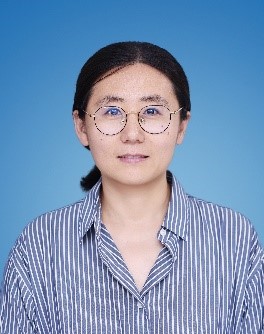郭聪

姓名:郭聪
职务/职称:副教授
邮箱:congguo@shu.edu.cn
电话:N/A
研究领域:生物物理(生物大分子的分子动力学模拟)
教育经历:
2009 复旦大学物理学系,理学学士
2014 复旦大学物理学系,凝聚态物理学博士
工作经历:
2014/11至 2017/11 (美国)佛罗里达州立大学、乔治亚理工学院,博士后
2017/12至 2021/02 上海大学理学院物理系,讲师/特聘副研究员
2021/03至 今 上海大学理学院物理系,副教授
代表性科研项目:
上海市高校青年东方学者(2017)
国家自然科学基金青年项目(2019.01至2021.12)
代表性学术论文:
(1) X. Chen, C. Guo*. Simulations of PKA RIα homodimer reveal cAMP-coupled conformational dynamics of each protomer and the dimer interface with functional implications, Phys. Chem. Chem. Phys., 2024, 26, 18266-18275.
(2) Z. Lao, Y. Tang, X. Dong, Y. Tan, X. Li, X. Liu, L. Li, C. Guo*, G. Wei*. Elucidating the reversible and irreversible self-assembly mechanisms of low complexity aromatic-rich kinked peptides and steric zipper peptides, Nanoscale, 2024, 16, 4025-4038.
(3) D. Huang, C. Guo*. E46K mutation of α-synuclein preorganizes the intramolecular interactions crucial for aggregation, J. Chem. Inf. Model., 2023, 63, 4803-4813.
(4) B. Wang, C. Guo*. Concentration-dependent effects of cholesterol on the dimerization of amyloid-b peptides in lipid bilayers, ACS Chem. Neurosci. 2022, 13, 2709−2718.
(5) M. Zhao, C. Guo*. Multipronged regulatory functions of serum albumin in early stages of amyloid-b aggregation. ACS Chem. Neurosci. 2021, 12, 2409-2420.
(6) H. Xie, C. Guo*. Albumin alters the conformational ensemble of amyloid-b by promiscuous interactions: Implications for amyloid inhibition. Front. Mol. Biosci. 2021, 7, 629520.
(7) C. Guo*, H-X. Zhou*. Fatty acids compete with Ab in binding to serum albumin by quenching its conformational flexibility. Biophys. J. 2019, 116, 248-257.
(8) C. Guo, Huan-Xiang Zhou*. Unidirectional allostery in the regulatory subunit RIα facilitates efficient deactivation of protein kinase A. Proc. Natl. Acad. Sci. U. S. A. 2016, 113, E6776-E6785.
(9) C. Guo, Z.A. Amon, R. Qi, Q. Zhang*, L. Adler-Abramovich, E. Gazit* and G. Wei*. Expanding the nanoarchitectural diversity through aromatic di- and tri-peptide coassembly: nanostructures and molecular mechanisms. ACS Nano, 2016, 10 (9), 8316-8324.
(10) C. Guo, S. Cote, N. Mousseau* and G. Wei*. Distinct helix propensities and membrane interactions of human and rat IAPP1–19 monomers in anionic lipid bilayers. J. Phys. Chem. B, 2015, 119 (8), 3366-3376.
(11) C. Guo, Y. Luo, R. Zhou* and G. Wei*. Triphenylalanine peptides self-assemble into nanospheres and nanorods that are different from the nanovesicles and nanotubes formed by diphenylalanine peptides. Nanoscale, 2014, 6 (5), 2800-2811.
(12) C. Guo, Y. Luo, R. Zhou* and G. Wei*. Probing the self-assembly mechanism of diphenylalanine-based peptide nanovesicles and nanotubes. ACS Nano, 2012, 6 (5), 3907-3918.
(最后更新日期:2025.02.27)




